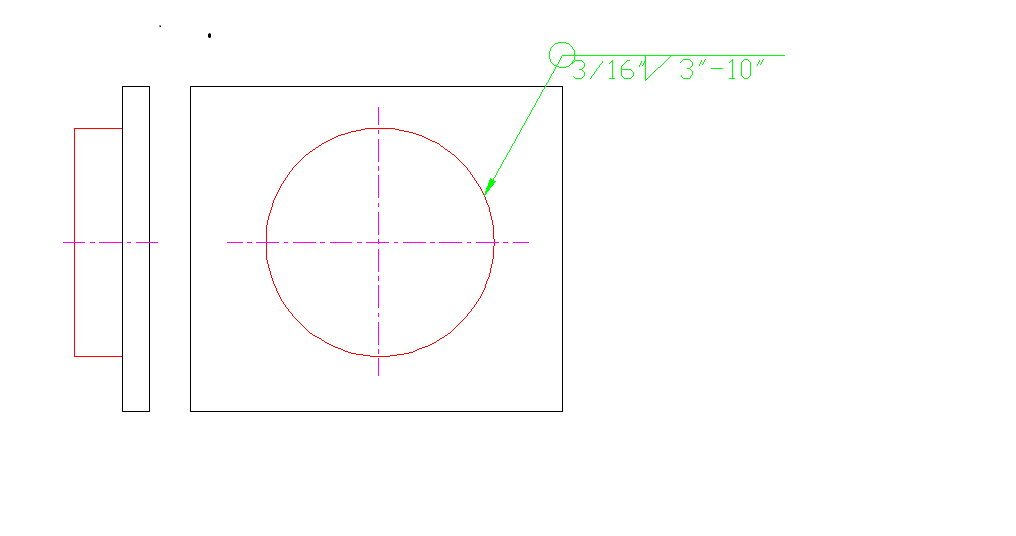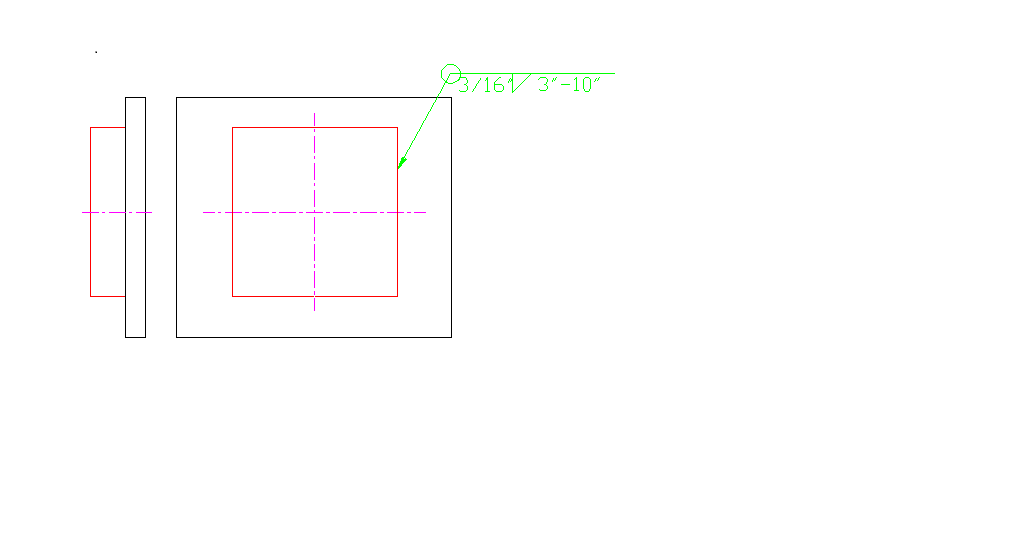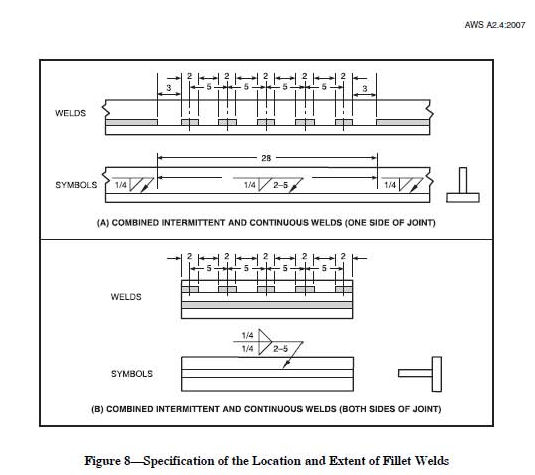It the designer has any doubt that a welding symbol will be interpreted correctly, a different welding symbol should be used. If there is no welding symbol that clearly delinates the welding requirements, a sketch of the weld is perfectly acceptable.
A good example of a situation where a standard welding symbol is not appropriate would be the welded skewed joint. When the dihedral angle between the two memebers is less than 60 degrees the designer must consider the Z-loss factor. The drawing requirements for such welded joints have evolved over the years in AWS D1.1. The weld between the skewed members is no longer referred to as a fillet weld. It is my opinion that the weld is neither a fillet weld nor a groove weld. One of the basic premises of a fillet weld is that there is fusion to the root, but in the case of skews between 60 degrees and 30 degrees the presumption of fusion to the root is not the case, i.e., the requirements to consider the Z-loss must be factored into how the weld is sized.
Clearly, the weld between the two members is not a fillet weld, so the fillet weld symbol is not appropriate when specifying the weld. Likewise the weld between the skewed members does not meet the requrements of a complete or partial joint penetration groove weld. The weld is on the joint rather than in the joint. therefore a welding symbol describing a PJP or CJP groove weld is not appropriate. As a matter of fact, when sizing the weld, the minimum weld size required is based on the thickness of the base metals as if it were a fillet weld. However, the designer has to define the weld based on the throat requirements and the fabricator has to specify the weld based on the leg requirement with due consideration for the Z-loss and possibly the back-up weld in the case of a T, Y, or K connection.
When neither a standard fillet weld or groove weld is required, perhaps the easiest means of conveying the information required by the fabricator and the welder is for each entity, i.e., the designer and fabricator, to simply show a cross section through the joint with the appropriate dimensions as required by D1.1 and as depicted below.
It is logical for the fabricator to be given the responsibility to detail the sketch of the weld on the shop drawing with the required leg dimensions because it is the fabricator that determines what welding process is to be used and the position in which the weld will be deposited. The Z-loss is a function of the dihedral angle, welding process, and position in which the weld is made. The designer more than like will not know who the fabricator will be, what welding process will be selected, or the position in which the welding will be performed. The designer's task is to provide the fabricator with the required effective throat that is sufficient to transmit the design loads.
References: AWS D1.1-2008 Clause 2.2.4 (1) and (2), Clause 2.2.5, and 2.2.5.2 (1) and (2), Clause 2.3.3.2, Clause 2.3.3.3, Clause 2.3.3.4, Table 2.2 (Z-loss), Clause 4.12.4.2 (modifications for tubular structures with a back-up weld), and Table 5.8 (minimum fillet weld size).
Best regards - Al
P.S. my attempts to resize the sketch clearly failed.







